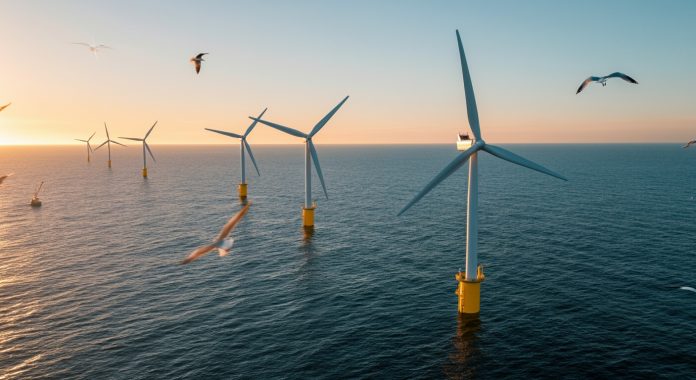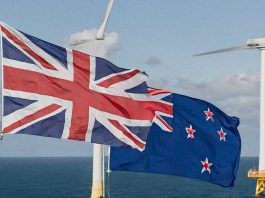A groundbreaking US research collaboration is set to transform floating offshore windfarms, helping to reap the benefits of the country’s abundant renewable resources.
In an effort to advance floating offshore windfarms in the United States, researchers from Johns Hopkins Whiting School of Engineering (WSE) and Portland State University (PSU) are set to improve our understanding of how wind, waves, and turbines interact.
This new initiative seeks to address a critical challenge in wind energy by enhancing the efficiency and accuracy of simulations and experiments related to floating wind turbines.
Harnessing deep ocean wind energy potential
Floating offshore windfarms offer the potential to harness wind energy in deeper waters, where approximately two-thirds of the US offshore wind resources are located.
Unlike traditional wind turbines anchored to the sea floor, floating turbines are mounted on buoyant platforms tethered to the ocean bed by mooring lines.
This design enables deployment in deeper waters but introduces complexities in accurately predicting energy output due to the dynamic nature of the floating platforms.
Innovative computational and experimental integration
The collaborative project, funded by the US National Science Foundation (NSF) and the DOE’s Wind Energy Technologies Office (WETO), aims to bridge the gap between computational models and experimental methods.
The researchers are focusing on enhancing Large Eddy Simulations (LES), a computational technique used to model wind fields around floating turbines, to better account for the interaction of wind with moving waves.
Project Co-Principal Investigator Dennice Gayme, a mechanical engineering professor at WSE, highlighted the challenges associated with floating offshore windfarms.
“One of the challenges to floating offshore windfarms is we don’t have test beds. You can’t go out to sea, build a test windfarm, and see how it performs. It’s just too expensive,” said Gayme.
“Most studies focus on LES simulations or lab experiments and don’t look at how to bridge the gap between the two, which is key to developing a complete understanding of the system.”
The project represents a pioneering effort in combining advanced computational techniques with experimental research.
By refining LES methods and using a sophisticated wind tunnel and wave tank facility at PSU, the team aims to create more precise models for designing and optimising floating windfarms.
Ron Joslin, director of the NSF fluid dynamics programme, emphasised the importance of the NSF-DOE partnership in advancing renewable energy research. “NSF and DOE often have complementary roles in fostering US research and innovation, and together, we move discoveries from the academic lab to commercial implementation.
“NSF has partnered with WETO to co-fund groundbreaking research in wind renewable energy to increase the US capacity for renewable energy. This partnership gives us greater flexibility to award new projects with the funds available at each agency.”
Revolutionising wind flow representation
The project will also explore new computational methods for representing wind flow over moving water.
Conventional approaches either use a general’ roughness length’ for quicker but less accurate results or employ complex, adaptable grids that are time-consuming to develop.
The new method proposed by Charles Meneveau, Principal Investigator and professor of mechanical engineering at WSE, aims to merge the strengths of both approaches.
“We can get accurate results using this model by combining the better features of both the faster, less accurate method, as well as the slower, more exact one,” Meneveau said.
“Our model reflects different moving waves with peaks and troughs but does so quickly and accurately. It can also factor in a moving platform with a turbine on top of it. It works quickly but provides the critical details.”
Cutting-edge experimental techniques
On the experimental side, Raúl Bayoán Cal, a PSU professor of mechanical and materials engineering, will lead the practical research using a state-of-the-art wave tank.
His facility, which includes a test length of five metres, allows for simultaneous testing of multiple turbines and their interactions with waves.
With this ambitious research initiative, the partnership between WSE and PSU is poised to make significant strides in optimising floating offshore windfarms, potentially transforming the landscape of renewable energy production in the US.









